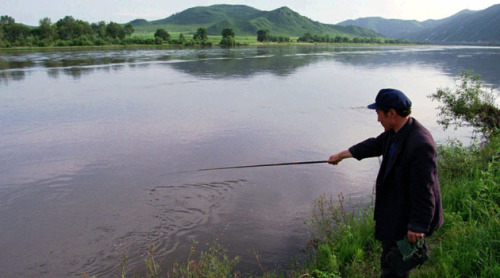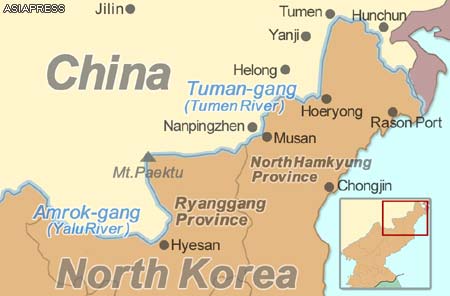by David Parmer
Polluted, not very wide and forgotten—this seems to be an apt description of the Tumen river that flows for 521 km from Mount Paektu to the Sea of Japan, and borders China, Korea and Russia. Escapees from North Korea regularly cross the Tumen to China, but not Russia. This quiet river is scheduled to take center stage in the 21st century, and the agent of change is, of course, commerce, not politics.
Starting in 1990 at the Conference on Northeast Asian Economic and Technical Cooperation in Jilin, China there has been talk of creating an economic zone in the Tumen River area. Things moved slowly, and in 1991 the Tumen River Area Development Program (TRADP) was established. In 1995 five member countries agreed to a consultative commission. These countries were, Russia, China, DPRK, Mongolia and Republic of Korea. Re-named the Greater Tumen Imitative (GTI) in 2005, the organization looked at cooperation in Transport, Tourism, Energy, Investment and Environment. In 2012 mechanisms were created to support future development projects. The GTI says its purpose is to build “a great partnership for common prosperity between neighbours.”
The GTI strategic action plan aims to:
- Promote the rehabilitation and construction of basic transportation infrastructure and major transportation hubs to support economic cooperation and development in the GTR;
- Deregulate the border-crossing procedures for the efficient movement of goods and passengers in the GTR;
- Create a favourable environment to facilitate trade and attract private sector investment in the GTR, and improve access to international financial institutions for both public and private sector investment;
- Promote the GTR as a globally attractive tourism destination and increase the cross-border tourist flows in the GTR;
- Establish an effective institutional mechanism for energy policy support and reduce non-physical barriers to energy transmission and trade in the GTR;
- Promote environmental sustainability in the GTR while conducting economic activities;
- Strengthen the partnerships with Japan and DPRK and their participation in GTI cooperation for common prosperity in NEA;
Enhance the capacity of the GTI as a significant regional economic and political partnership in NEA and transition it into an international organisation.
These are big plans, and things seem to be moving. One of the most interesting developments was reported by the Washington Post on October 15, 2015. China has completed an high-speed rail line from Changchun to Hunchun, and South Korean companies have established the Hunchun Posco Hyundia International Logistics facility.
For the area to begin to achieve its potential much work still needs to be done, but things are moving forward. Eventually, traffic will flow down the Tumen to Rason port in North Korea and on to the Sea of Japan. When this happens, its real-development will have begun.
Greater Tumen Initative
 日本語
日本語 English
English 中国語
中国語
